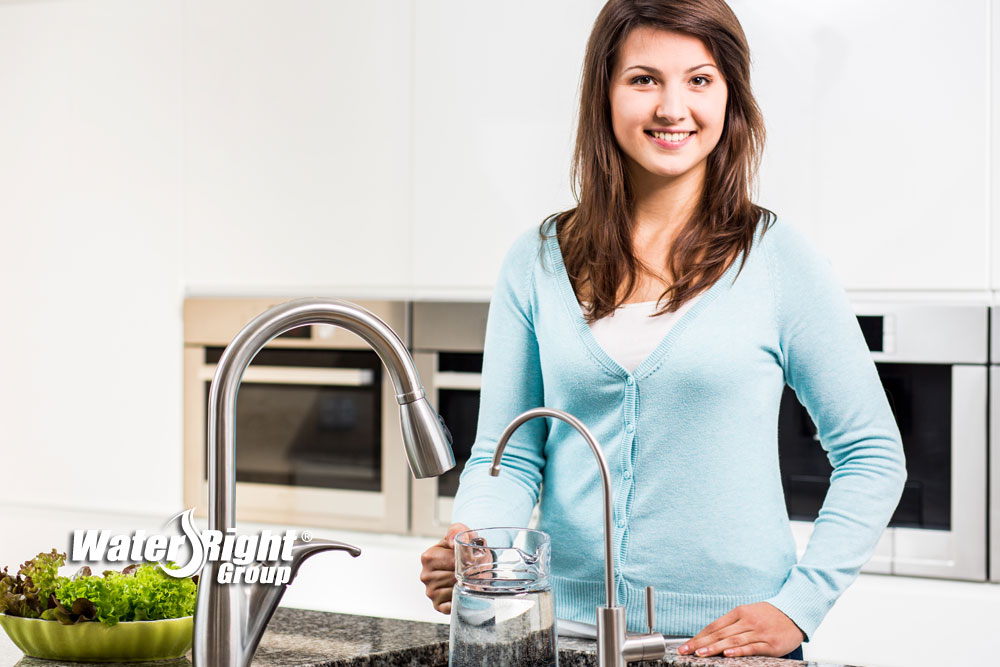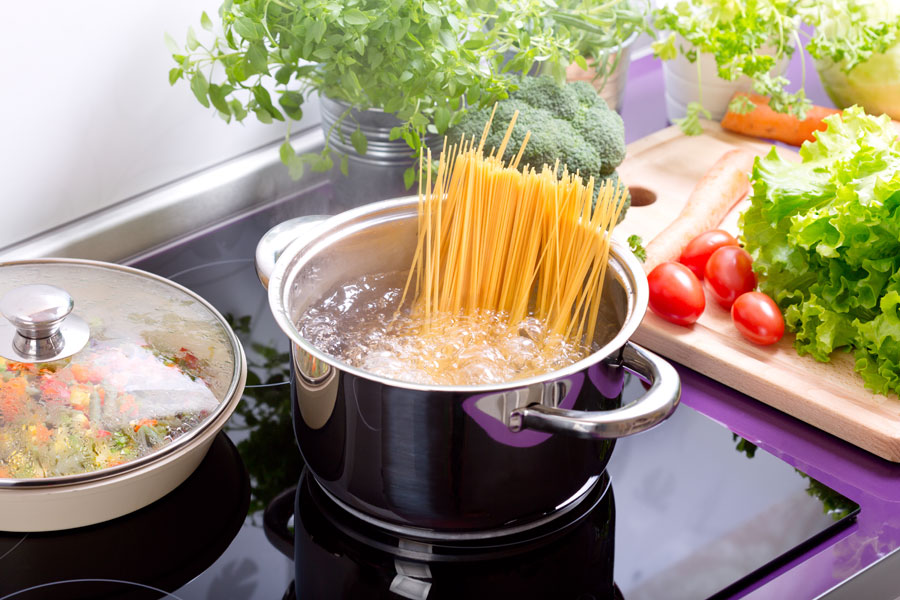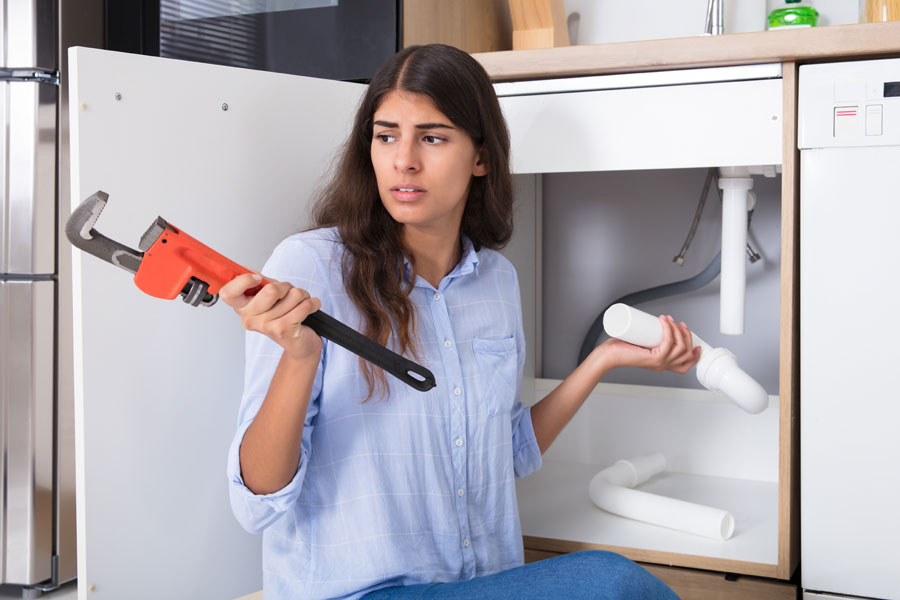
What You Need to Know When Buying an R.O. | 15 Questions About Reverse Osmosis Systems for Your Home
You’re fed up with the unpleasant smell or taste of the tap water in your home, but you don’t want to keep buying bottled water, and you’d rather not have to remember to keep one of those water filter pitchers full.
Wouldn’t it be convenient if you could get pristine drinking water straight from the faucet?
More homeowners are having reverse osmosis systems installed to improve the quality of drinking water in a convenient and cost-effective way. However, if you’re unfamiliar with reverse osmosis (R.O.) drinking water systems, you likely have questions.
Here are 16 answers to help you understand how an R.O. system provides unique solutions to common household water problems.
1. What is a Reverse Osmosis System and How Does It Work?
Reverse osmosis is a water treatment process that takes water with dissolved material and filters out impurities by forcing the solution through a semi-permeable membrane, producing clean, refreshing drinking water.
A reverse osmosis system goes through a series of steps before it’s stored for usage. There is carbon filtration before and after water is forced through the membrane. There’s also a holding tank for the filtered water and a special faucet for dispensing.
Find out more about how reverse osmosis works and get the full details of our exclusive systems.

2. What Does Reverse Osmosis Remove?
The semi-permeable membrane in an R.O. system allows water molecules to move through tiny pores, but it repels other molecules, including the sodium that your home’s water softener may have added to remove calcium and magnesium through ion exchange.
Reverse osmosis is also an effective way to filter out potentially harmful contaminants including:
- Lead
- Arsenic
- Copper
- Nitrates and Nitrites
- Chromium
- Selenium
- Fluoride
- Radium
- Barium
- Cadmium
- Cyst (cryptosporidium)
- Total Dissolved Solids (TDS)
Carbon pre-filtration also removes chlorine, which may be added by your municipality and can make drinking water taste like a swimming pool.
3. How is It Different than Other Types of Water Filtration?
There are some major differences between reverse osmosis and other options for improving drinking water.
Water filter pitchers use carbon filtration. On its own, basic carbon filtration can improve the taste and smell of water, but it’s not as effective as reverse osmosis at removing impurities that can not be absorbed, like lead or nitrates.
Distillation is another form of water treatment you might consider. When water is distilled, it’s brought to a boil, and the vapor left behind is condensed and used for drinking. Distillation removes contaminants with boiling points that are higher than water, but this excludes some chemicals. Chlorine and some herbicides and pesticides have lower boiling points than water so they end up in the vapor. Household water distillation systems also tend to be more expensive than an R.O. system.
4. What Does R.O. Water Taste Like?
Water in its purest form has no odor or flavor. When you “taste” water, you’re actually tasting what’s been dissolved in it. People have various opinions on what makes water taste good. But, if you dislike the taste or smell of your home’s water now, you will most likely prefer R.O. water.
Many families find they drink more water after having a reverse osmosis system installed.
5. Should I Cook with R.O. Water?
 Yes! Cooking with reverse osmosis water is ideal because impurities have been removed. Hard water and chlorine may negatively affect the texture, flavor, and appearance of certain foods. Dissolved minerals may also impact the way baked goods rise.
Yes! Cooking with reverse osmosis water is ideal because impurities have been removed. Hard water and chlorine may negatively affect the texture, flavor, and appearance of certain foods. Dissolved minerals may also impact the way baked goods rise.
R.O. water is especially good for pasta, rice, and dried beans, which are cooked in water. Many also people prefer it for making coffee and tea.
6. Should I Water Plants with R.O. Water?
Reverse osmosis water may not be the best choice for watering some houseplants. Plants are used to absorbing groundwater, which has dissolved minerals and other nutrients in it. On the other hand, certain acid-loving plants may do well with R.O. water thanks to its pH level.
Because R.O. water is as close to unadulterated H2O as you can get, some serious gardeners start with it as a base and add the right nutrients for the plants they’re growing.
7. Can I Give R.O. Water to My Pets?
R.O. water is perfectly fine for cats and dogs to drink. Learn more in our article about hard water vs. soft water for pets.
People will also use R.O. water in aquariums as a starting point because it allows them to easily adjust it to get the water quality needed for their fish.
8. Where is an R.O. Unit Typically Installed?
Most homeowners have a reverse osmosis system installed under their kitchen sink. There’s usually plenty of room, although you may need to find another place to store a few items. If under the sink is not an option, the unit can also be installed in a basement, utility room, closet, or garage.
Because an R.O. unit comes with its own dispensing faucet, a hole may need to be added to your sink or countertop for installation. Some sinks already come with an extra hole for mounting.
9. Can I Install an R.O. System Myself?
 While you can buy your own unit from a big box store and try to install it yourself, it may be better to let a residential water treatment professional, since there’s more to a properly configured system than connecting things up in the right spots.
While you can buy your own unit from a big box store and try to install it yourself, it may be better to let a residential water treatment professional, since there’s more to a properly configured system than connecting things up in the right spots.
A local professional will consider factors such as your home’s water pressure, temperature, the distance of the holding tank to the faucet, and overall water quality. This information is also important for understanding your unit’s maintenance needs.
Find out more about DIY water treatment and why it’s better to trust someone with knowledge and experience.
10. How Much Water Will I Get Per Day?
The manufacturer’s product specification will indicate approximately how many gallons your unit can produce in one day. This number, however, varies depending on factors inside your home:
- Water pressure: Higher pressure produces more water
- Water temperature: Higher temperature produces more water
- Total dissolved solids (TDS): These can clog your membrane or filters and slow production
Reverse osmosis systems are tested at 60 psi and 77˚ F, but your home may have water temperature and pressure that are quite different, which will impact production.
Unless there are issues, a good R.O. system almost always produces enough drinking water for a household. Water-Right’s Eclipse® and Impression® systems produce 14 gallons per day (gpd), although the membrane can handle 41-53 gpd under standard conditions.
11. What Temperature is R.O. Water?
The water your reverse osmosis system produces is held in a storage tank until you’re ready to dispense it. Depending on the indoor temperature, the water typically comes out cool, but not ice cold.
You cannot adjust the temperature of your R.O. water. Most people simply add ice cubes to drinking water or store a pitcher in the fridge. In some cases, you may be able to hook up your R.O. unit to a fridge’s water dispenser.
12. Should I Re-Mineralize R.O. Water?
Some people wonder if they are losing health benefits when minerals such as calcium and magnesium are removed from water. In short, the best way to obtain these nutrients is through the food you eat.
Some people do choose to re-mineralize R.O. drinking water, which can be done with special drops containing trace minerals or a pinch of mineral-rich Himalayan sea salt.
13. Is Reverse Osmosis Environmentally Friendly?
A reverse osmosis system does produce some waste water because it needs to flush contaminants out of the system and down the drain as it produces refreshing water for your home.
However, installing a home drinking water system has tremendous potential to reduce your family’s carbon footprint. If you’re currently purchasing bottled drinking water, you’ll be creating much less plastic waste.
It’s estimated that a million water bottles are sold every minute. Unfortunately, most plastic water bottles do not get recycled, ending up in oceans and landfills. You can do your part to reduce this waste with an R.O. system and a reusable water bottle.
14. How Much Maintenance is Required?
The R.O. membrane and the various filters should be changed periodically. Keeping the carbon pre-filters fresh helps protect the membrane from degrading too quickly. Carbon filters should also be changed every six to 12 months while the R.O. membrane should be changed every one to three years, depending on water quality and usage.
Ignoring reverse osmosis system maintenance leads to reduced production of water and restricted flow. If you notice problems with your unit, it could be that filters or the membrane need replacing.
Of course, this all depends on the initial quality of the water your R.O. system is purifying. A qualified water treatment professional can evaluate your situation and let you know what an appropriate maintenance schedule should be. It may be preferable to have your home’s water softened before it goes through the R.O. This way, the unit is removing sodium that is easier to rinse to the drain rather than hard minerals, which eventually clog the membrane.
Take good care of your reverse osmosis drinking water system and it should last for many years.
15. Who Should I Call to Find the Right Reverse Osmosis Solution?
If you still have questions, or feel ready to have your own reverse osmosis drinking water system installed, a local water treatment expert can help.
Water-Right’s network of dealers, including the Evolve® and WaterCare® brands, brings you trained professionals with an in-depth understanding of equipment and the science behind treating residential water. They’ll conduct a free water analysis at your home, examine installation locations, and point you in the right direction.

